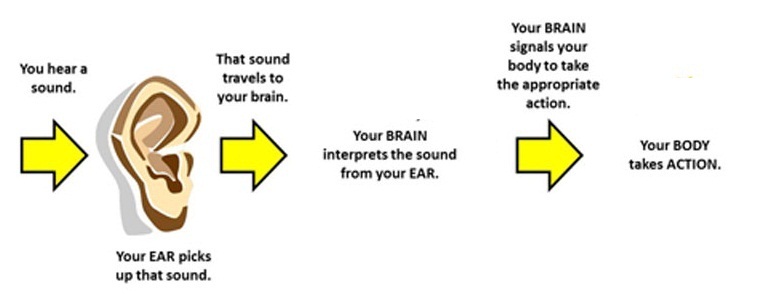Sections
All sounds which we perceive is psychoacoustics. The physical phenomenon of sounds stops, when the sound enters into the ear. Because of the limitations of hearing, the sound we hear is not what actually sounds. i.e., the sound we hear is entirely different from original sound. The study of sound perception is called Psychoacoustics. It studies about the psychological and physiological responses associated with sound. i.e., it is the study of how the human interact with sound or perceives the sound.
Human ear normally hear sounds in range of 20Hz to 20 KHz. But the limit depends upon age. It will decrease as age increases. Aged people can hear sounds only up to 16 KHz. In ideal laboratory conditions, 12 KHz is the lowest frequency that can be identified as a musical tone. Using body’s sense of touch, tones between 4-16 KHz can be perceived. The frequency resolution of the ear is 3.6 KHz. Small pitch difference can also be perceived. At low frequency difference pitch, we can hear the interference of two different pitch. This phase variance effect is known as beating.

Psychoacoustics studies about pitch perception, sound localization and musical acoustics. The sound engineers create realistic sound for film, music etc with the use of this psychoacoustics. Psychoacoustics can also be used in medical field too. In medical field, the psychoacoustics is used to identify the causes of hearing problems or sound localization malfunction. It analyzes the limitation of ear in perceiving a sound. Some of the limitations of ears are given below.
Simultaneous masking: - This occurs when the sound is inaudible due to the presence of noise. If a unwanted sound occurs at the same duration of original sound, then also simultaneous masking occurs. For example, when two sine tones such as 440 KHz and 450KHz are separated, it will be perceived very clearly. If it occurs simultaneously, then it will not perceive clearly.
Masking:-Consider a situation that a truck is passed through while we talking. It is really difficult for a conversation. The quieter sound is inaudible in the presence of larger sound. It is due to the sound is masked by another sound. This is known as Masking.
Due to these limitations, ear will not have its peak perceptive capacity.
Sound Localization
Sound localization means the ability of a human to locate the sound source. It depends on the skull shape of human, spaces between ear’s etc. They examine the brain activity in response to the sound. They study about the interaction between sound and human brain. The brain can recognize the change in loudness, timing between two ears to locate the source of the sound. Sound localization depends on three factors.
Species like owls have ears which are asymmetrically placed. It helps them to detect the sound in all three directions. This helps them to hunt in the dark. But in humans, the ears are placed symmetrically and they can detect the sounds in horizontal directions.
Music
Music Psychology and music therapy are the latest topics added into the psychoacoustics. Music psychology is also known as psychology of music which studies about musicology as well as psychology. It explains the music behavior. It has many applications. It is practically relevant in many areas includes music composition education, performance and also about human aptitude, intelligence, social behavior and creativity.
Music therapy is the process which music therapist uses music to improve the mental and physical health of clients. By using the musical experiences, the therapist helps to improve the health of clients such as social skills, emotional development, quality of life etc. The musical therapy services can pursue with referral and no referral (self referral). Physicians, Psychologist, etc. refer the patients to the services of music therapy. Patients (clients) can continue the music therapy without any referral. In some hospitals, schools, cancer centers, drug/alcohol recovery programs psychiatric hospitals uses the services of music therapy.
Missing fundamental: - 2f, 3f,4f etc is a s series of harmonic frequencies where f is the specific frequency. The human can perceive the pitch f. Pitch perception is the study of difference between sounds having different frequencies.
Sections